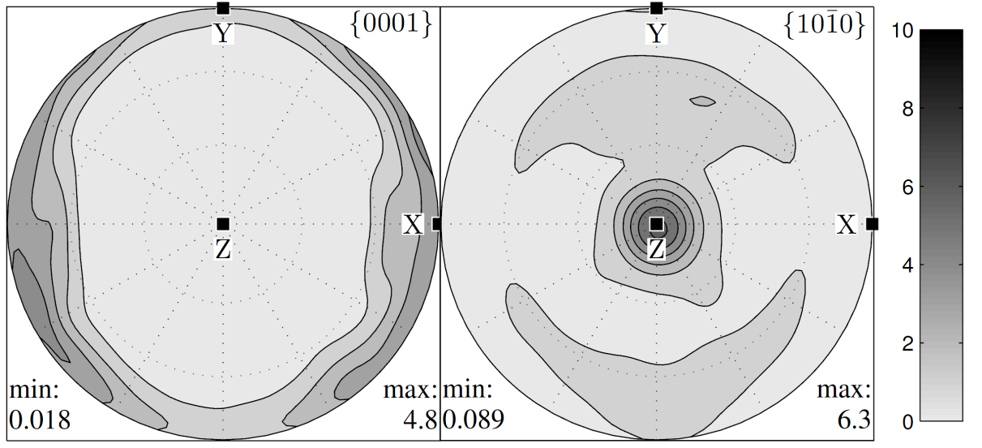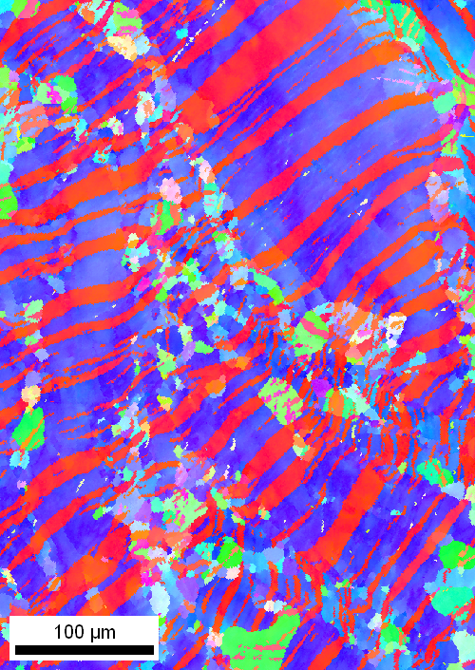Structural Scale
Multiscale modeling techniques employed at CAVS allow the simulation of materials, including novel metal alloys, from the scale of individual atoms and their electronic structure all the way to complete finished structures. Everything from automobile subframes to football helmet face masks can be reproduced computationally, allowing for robust, inexpensive simulations for design and optimization to fit a wide variety of criteria.
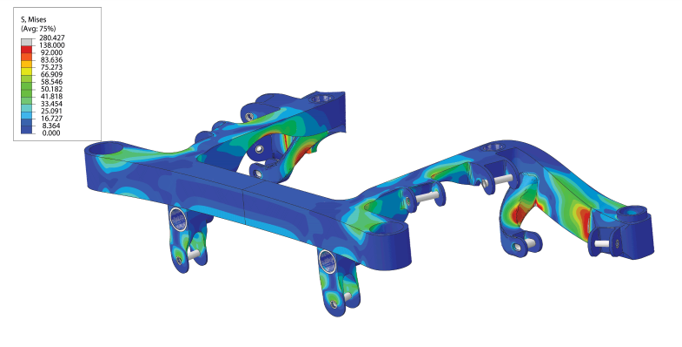
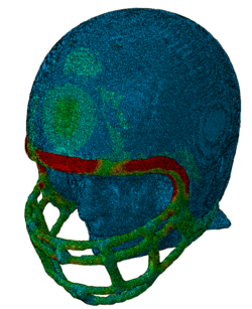
Metals DFT
Through solving fundamental quantum mechanical equations, researchers at CAVS are able to make predictions about the electronic and mechanical properties of materials on the scale of individual atoms.
By utilizing state-of-the-art software and techniques, the computing resources available at HPC2 and the Density Functional Theory, this research can be used to help develop new alloys and guide the development of models and simulations at higher length scales.
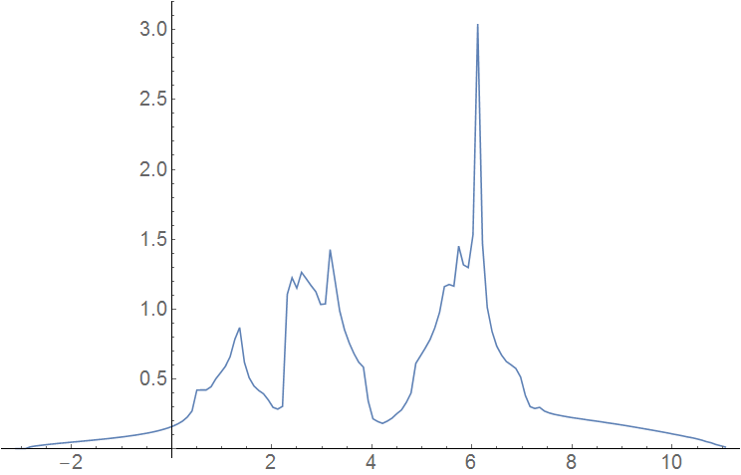
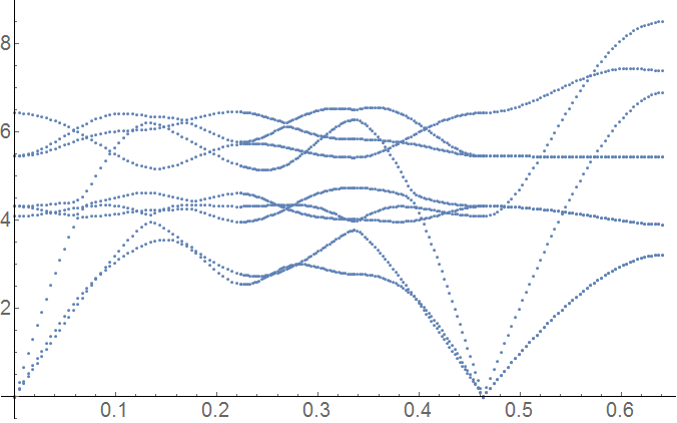
Nanoscale
By using semi-empirical classical potentials developed at CAVS using the Modified Embedded Atom Method (MEAM) formalism, the properties of candidate materials can be predicted and optimized. Performing simulations containing millions of individual atoms allows for predictions to be made for the elastic and plastic behavior of a material (above) including yield strength, failure, dislocation, twin formation, behavior and fatigue. Thermal processes such as solidification, phase transformation and precipitation can also be modeled (right). These simulations serve as the physical basis for higher length scale models, including discrete dislocation dynamics and mesoscale plasticity models.
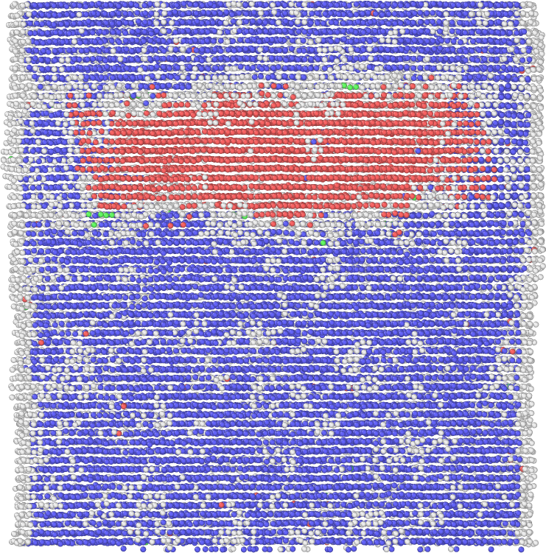
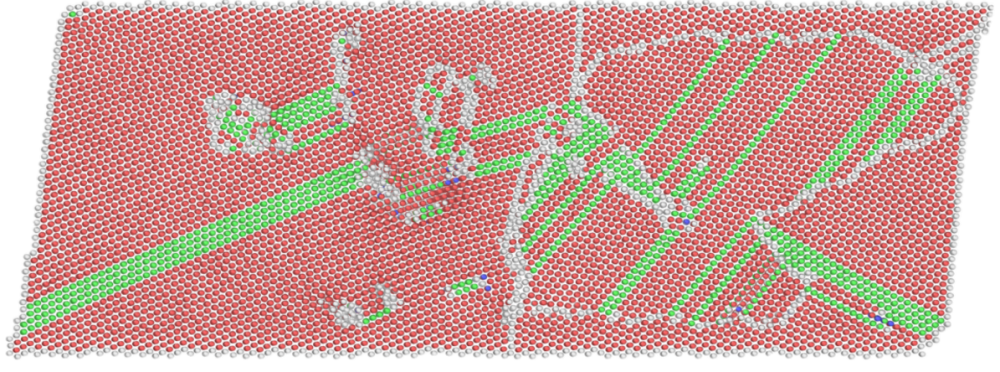
Metals DFT
Advanced finite element techniques, utilizing the DMG Plasticity/Damage Internal State Variable model developed at CAVS, allow our researchers to combine experimental information and simulation results from lower length scales into comprehensive models for the behaviors of real parts. Predictions of mechanical performance, fracture and failure, in response to a wide variety of forces and environments across various timescales, are possible using these integrated multiscale methods. These results can be used to develop predictive models and simulations for larger composite structures and systems, ranging from car parts to crash simulations, and even to the iron core of the earth.
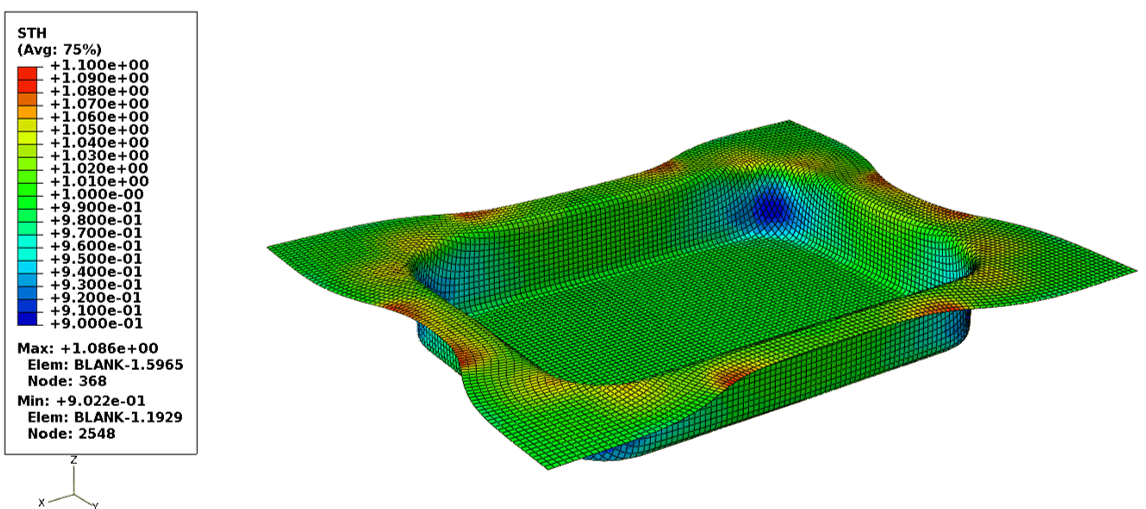
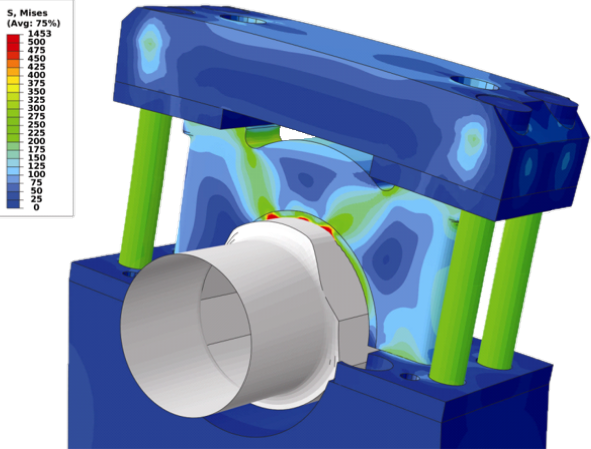
Mesoscale Crystal / Grain Plasticity
Bridging the atomic and continuum scales, mesoscale plasticity modeling is an important link in the ICME multiscale modeling paradigm. Using Phase Field modeling, Visco-Plastic Self Consistent methods, and Crystal Plastic Finite Element Models, scientists at CAVS are able to explore the complicated microstructure of alloys and make predictions about their behavior in real-world systems. This information is invaluable for the design of materials and the ability to predict the performance of components developed and created at CAVS.
